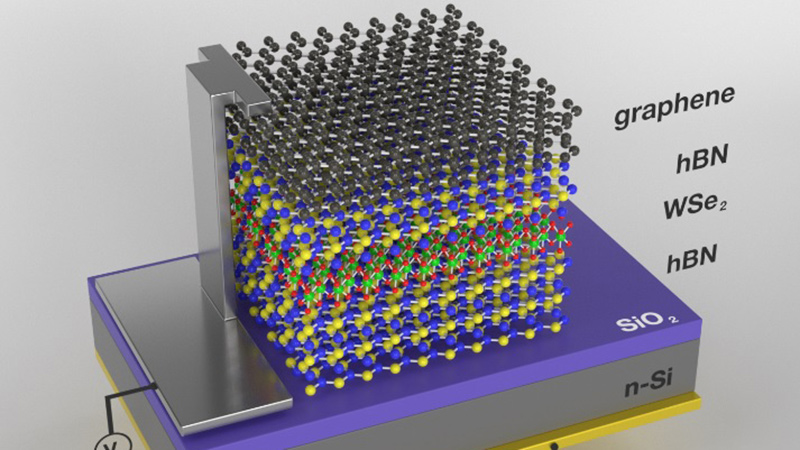Published:

Physicists from Heriot-Watt University, together with international partners, have created a device consisting of just a few sheets of atoms that can load single particles, such as electrons, one-by-one.
Control of the number of quantum particles is an important step towards processing, storing, and communicating quantum information with this emerging technological platform.
A single sheet of atoms offers the ultimate limit in miniaturization of flexible electronic and photonic devices. Beyond just physical size, two-dimensional (2D) crystals are intriguing due to highly unique optical, electronic, and mechanical properties. Researchers around the world are investigating if such materials could be used in hardware for future technologies which exploit the bizarre properties of quantum mechanics.
For quantum devices, there is a need to control the number of particles, such as electrons, in the quantum device down to the ultimate limit: just zero or one particle.
The work has been carried out by the Quantum Photonics Laboratory at Heriot-Watt University by Mauro Brotons-Gisbert, Artur Branny, Santosh Kumar, Raphael Picard, Raphael Proux, and Professor Brian Gerardot from the Institute of Photonics and Quantum Sciences. The team collaborated with Mason Gray and Kenneth Burch from Boston College in the United States and Kenji Watanabe and Takashi Taniguchi from the National Institute for Materials Science in Japan.
Dr. Mauro Brotons-Gisbert explains: “According to quantum mechanics, when the quantum tunnelling is highly likely, a single particle's position can be described by a probability that it is located on both sides of a solid barrier. In our device, the solid barrier or 'wall' was a single sheet of atoms, so the probability that it could be on both sides was very high, and we were able to tune this simply by changing a voltage to a device. This led to dramatic effects when the light was emitted from the quantum dot.”
Professor Gerardot, adds: “The 2D material platform offers exciting opportunities to combine different types of atomic sheets, giving us access to unique physics that isn't possible with conventional bulk semiconductors. Our results show that we can make such devices at the quantum level – controlling a single trapped particle in a deterministic way.”
The new results are said to enable a better understanding of the quantum properties of 2D materials and allow new types of experiments, in particular where the particles which are tunnel coupled to the quantum device can have interesting properties, for instance from a magnetic material or graphene. Ultimately, this could lead to new technologies based on quantum mechanics.
The research has been published today in Nature Nanotechnology